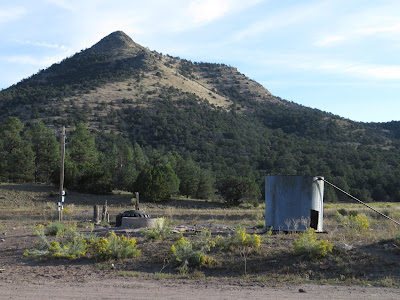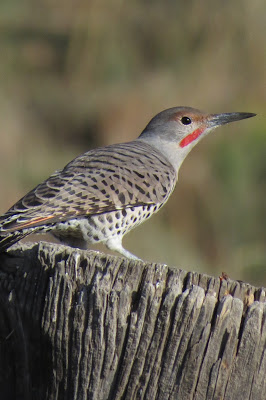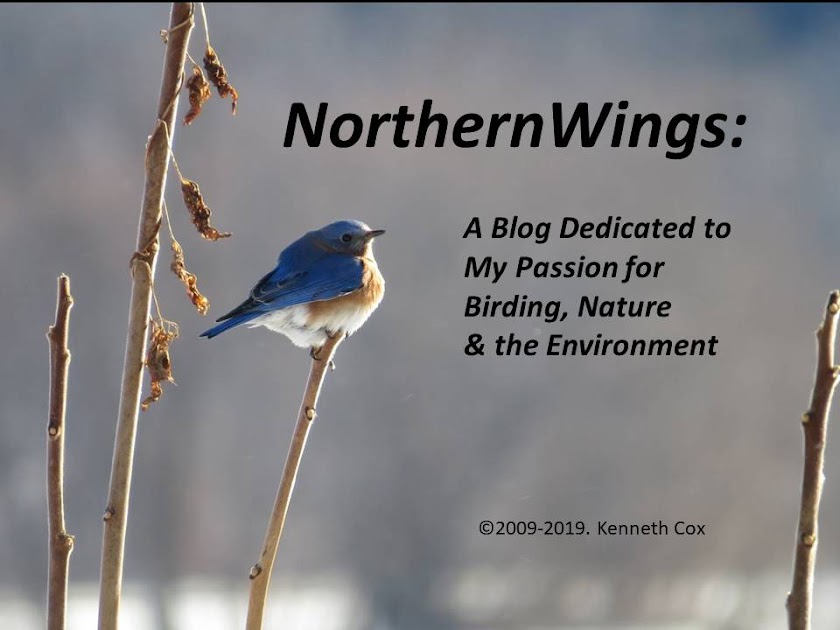Water is essential for life and this is no less true than for wildlife and flora living in arid environments. In the Southwest, where water is a rare commodity much of the year, artificial sources (tanks, troughs, ponds) that ranchers provide for livestock on the range also become oases for a diversity of wildlife, including deer, elk, mountain lion, bats, small mammals, and birds. This past September during one of our annual visits to New Mexico I had the pleasure to stake out a local livestock watering tank (Sawmill Well) and view first hand a variety of birds attracted to the sight and sound of running water.
Sawmill Well (34.147333 N; 107.908425 W) is in Crosby Canyon which is located in northeastern Catron County in west-central New Mexico. The canyon originates just east of the Crosby Mountains and extends about six miles east-northeastward before merging with White House Canyon near the small community of Datil at the intersection of US Route 60 and NM Route 12. Lower elevations within Crosby Canyon is a grassland biotic community with
Pinyon-Juniper Woodland dominating the surrounding slopes. Deeper into the canyon the biome type becomes
Ponderosa Pine Forest interspersed with Gambel Oak and junipers.
 |
| Sawmill Well & East Sugarloaf Mountain |
The well is located on U. S. Forest Service land and flanked on the north by East Sugarloaf Mountain and to the south by Anderson Mountain, both with elevations greater than 8,700 feet. At first sight the well is not a particularly impressive facility but is a critical water supply for free-ranging cattle and opportunistic wildlife. One of my brief visits to the well produced the following bird species flying in for a drink or to bathe: Mourning Dove, Red-naped Sapsucker, Northern (Red-shafted) Flicker, Western Scrub-Jay, Pinyon Jay, Western Bluebird, Mountain Bluebird, Yellow-rumped (Audubon's ) Warbler, Canyon Towhee, Chipping Sparrow, Cassin's Finch, House Finch, Pine Siskin and Lesser Goldfinch. Being that most local neotropical species (flycatchers, warblers, tanagers, orioles, buntings) had already departed for their winter habitats, imagine what might be seen spring through summer before the monsoon rains arrive. The following photos were taken at the well.
 |
| Red-naped Sapsucker, male |
 |
| Western Bluebird, male |
 |
| Northern "Red-shafted" Flicker, male |
 |
| Mountain Bluebird, male |
 |
| Canyon Towhee |



